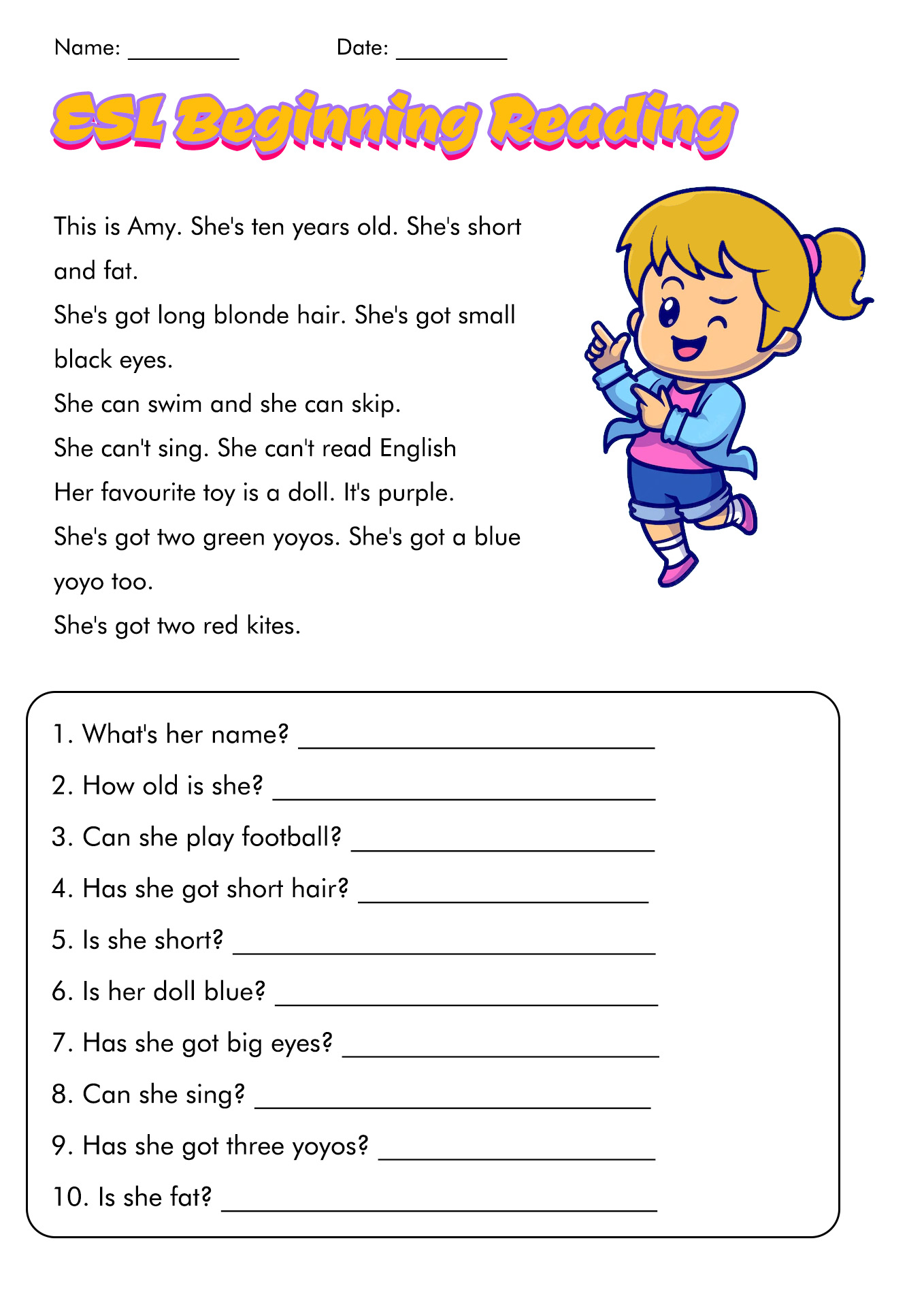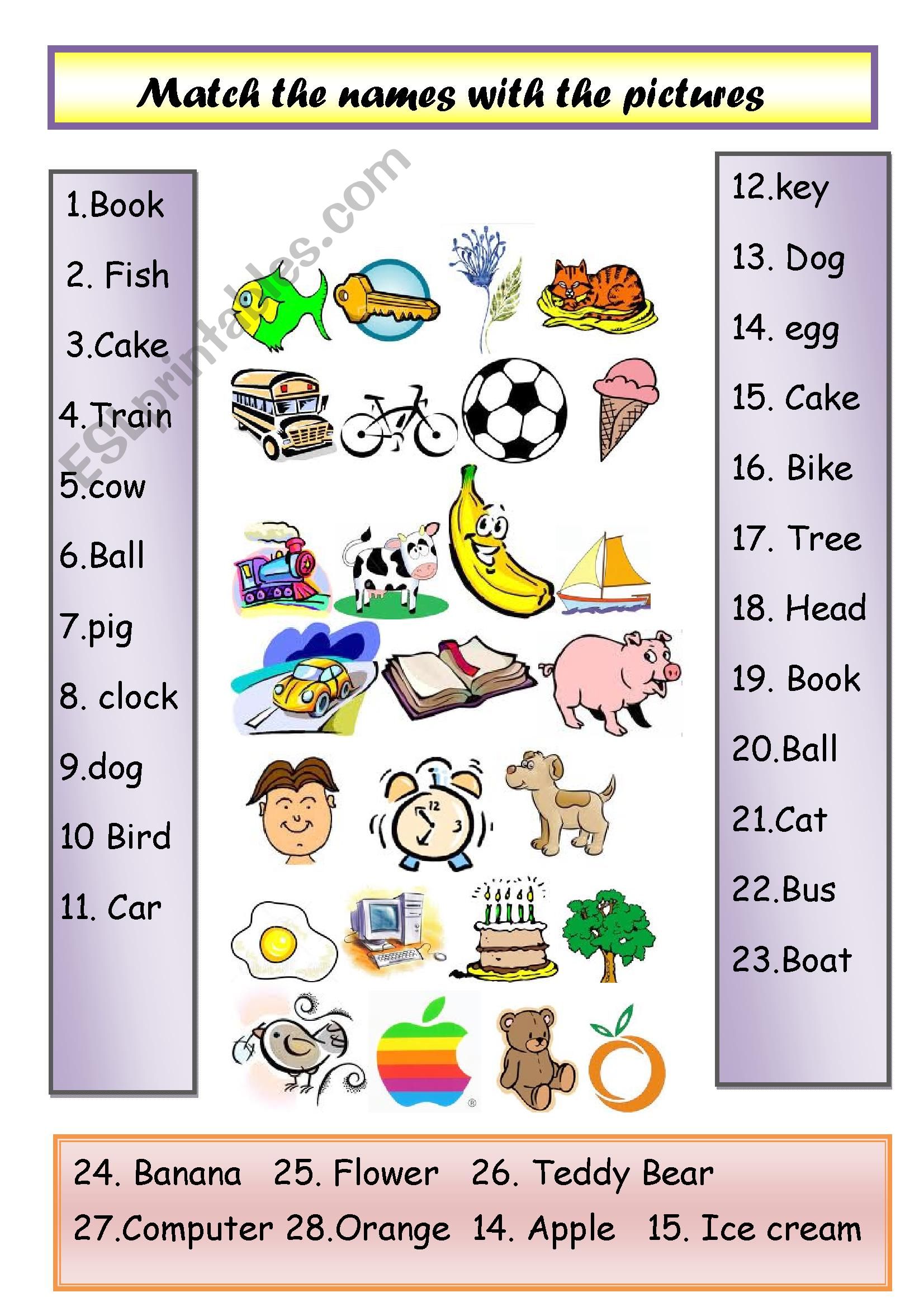
Unlocking English: The Indispensable Role of ESL for Beginners Worksheets
Learning a new language can feel like embarking on a vast, uncharted ocean. For those just setting sail on their English journey, the sheer volume of vocabulary, grammar rules, and pronunciation challenges can be overwhelming. This is where ESL for beginners worksheets emerge as an invaluable lighthouse, guiding learners through the initial waves and providing structured, digestible steps towards fluency. Far from being mere paper exercises, these carefully designed tools are foundational building blocks, offering a tangible pathway to understanding and mastering the basics of English.
Why Are ESL for Beginners Worksheets So Essential?
The transition from knowing little to no English to forming basic sentences requires a strategic approach. Worksheets for beginners provide this structure in several critical ways:

-

Structured Learning and Reinforcement: Beginners need clear, step-by-step guidance. Worksheets break down complex concepts into manageable chunks, allowing learners to focus on one grammar point, a small set of vocabulary words, or a specific reading skill at a time. The repetitive nature of many exercises helps to cement new information in the learner’s mind.

-
Tangible Progress and Confidence Building: Completing a worksheet and getting answers correct provides immediate positive feedback. This sense of accomplishment, even with simple tasks, is crucial for building confidence and motivation, encouraging learners to continue their journey.
-
Practice Across All Four Skills (Directly and Indirectly):

- Reading: Worksheets often feature simple texts, matching exercises, or true/false questions that directly improve reading comprehension.
- Writing: Fill-in-the-blanks, sentence completion, and basic sentence construction tasks directly hone writing skills.
- Vocabulary: Picture matching, word banks, and labeling exercises are excellent for expanding vocabulary.
- Listening & Speaking (Indirectly): Many worksheets serve as prompts for oral practice. A worksheet on daily routines, for example, can be used to describe one’s own day aloud, or to practice dialogues with a partner. Some even come with audio components for direct listening practice.



-
Self-Paced Learning and Flexibility: Worksheets can be used independently by self-learners, at home with parental guidance, or in a classroom setting. They allow learners to work at their own speed, revisiting difficult concepts as needed without feeling rushed.
-
Foundation for Advanced Learning: Mastering the basics through worksheets lays a solid groundwork. Without a firm grasp of fundamental grammar, vocabulary, and sentence structure, progressing to more complex English usage becomes significantly harder.


Key Areas Covered by ESL for Beginners Worksheets
Effective ESL for beginners worksheets target the most crucial foundational elements of the English language. These include:
-
Basic Vocabulary:
- Nouns: Common objects (table, chair, book), people (teacher, student, family members), places (school, home, park).
- Verbs: "To be," "have," "go," "eat," "drink," "sleep," "like," "want."
- Adjectives: Colors, sizes, simple descriptions (big, small, happy, sad).
- Numbers, Days of the Week, Months, Seasons.
- Greetings and Introductions: "Hello," "Goodbye," "My name is…," "How are you?"
-
Fundamental Grammar:
- Verb "To Be": Present tense (I am, you are, he/she/it is, we are, they are). This is arguably the most important verb for beginners.
- Simple Present Tense: For habits and facts (I eat breakfast, he plays football).
- Articles: "A," "an," "the" – understanding when to use each.
- Prepositions of Place and Time: "In," "on," "at," "under."
- Pronouns: Subject (I, you, he, she, it, we, they) and object (me, you, him, her, it, us, them).
- Singular and Plural Nouns: Regular and some common irregular plurals.
- Basic Sentence Structure: Subject-verb-object (e.g., "I like apples.").
- Yes/No Questions and Wh-Questions: (Who, what, where, when, why).
-
Reading Comprehension:
- Short, simple passages with high-frequency words.
- Matching sentences to pictures.
- True/False statements based on text.
- Answering simple questions about a story.
-
Writing Practice:
- Copying words and sentences.
- Filling in missing words in sentences.
- Unscrambling words to form sentences.
- Writing simple sentences about pictures.
-
Everyday Expressions and Situational English:
- Shopping, ordering food, asking for directions (simplified).
- Describing daily routines.
- Talking about hobbies and interests.
Types of ESL for Beginners Worksheets
The variety of worksheet formats keeps learning engaging and addresses different learning styles. Some common types include:
- Fill-in-the-Blanks: The most common, used for vocabulary, grammar, and sentence structure.
- Matching Exercises: Pairing words with pictures, words with definitions, or sentence halves.
- Multiple Choice: Selecting the correct answer from a given set of options.
- True/False Statements: Testing comprehension of a short text or concept.
- Sentence Unscramble: Rearranging jumbled words to form grammatically correct sentences.
- Picture Description: Learners write or speak sentences describing what they see in an image.
- Word Searches and Crosswords: Fun ways to reinforce vocabulary.
- "About Me" Pages: Encouraging learners to write personal information using basic English.
- Dialogue Completion: Filling in missing lines in a simple conversation.
- Labeling Diagrams/Pictures: Identifying objects or parts of a whole (e.g., parts of the body, items in a house).
Designing and Choosing Effective ESL for Beginners Worksheets
Not all worksheets are created equal. When selecting or creating ESL for beginners worksheets, consider these principles:
- Simplicity and Clarity: Instructions must be easy to understand, preferably with visual cues or examples. Avoid complex vocabulary in the instructions themselves.
- Visual Appeal: Use clear, engaging images that directly relate to the vocabulary or concept being taught. Avoid cluttered designs.
- Relevance: Connect content to the learner’s world and daily life (e.g., family, food, daily activities, common objects).
- Gradual Progression: Start with the absolute basics and slowly introduce new concepts, building on previously learned material.
- Variety: Mix up activity types to prevent monotony and cater to different learning preferences.
- Clear Learning Objective: Each worksheet should have a specific goal (e.g., "to practice ‘to be’ verbs," "to learn fruit vocabulary").
- Answer Keys: For self-learners or parents, an answer key is essential for immediate feedback and self-correction.
Integrating Worksheets into the Learning Process
Worksheets are most effective when integrated thoughtfully into a broader learning strategy:
- As a Pre-Lesson Activity (Warm-up/Assessment): Use a simple worksheet to review prior knowledge or introduce a new topic, gauging what learners already know.
- During a Lesson (Practice/Reinforcement): After introducing a new concept, use a worksheet for immediate practice. This can be done individually, in pairs, or small groups.
- Post-Lesson/Homework (Consolidation): Assign worksheets for homework to reinforce what was learned in class and provide extra practice.
- For Self-Study: Learners can work through worksheets independently, using answer keys to check their progress. This is particularly valuable for highly motivated individuals or those with limited access to formal instruction.
- As a Diagnostic Tool: Observe common errors on worksheets to identify areas where learners need more support or re-teaching.
- As a Speaking Prompt: Encourage learners to read their completed sentences aloud, or use the worksheet’s content as a basis for simple conversations.
Benefits for Different Stakeholders
The value of ESL for beginners worksheets extends beyond the individual learner:
- For Students: They provide a structured, low-stress environment for practice, build confidence, and offer tangible proof of progress. The visual and kinesthetic elements can make learning more enjoyable.
- For Teachers: Worksheets are time-saving tools for lesson planning, differentiation (providing different levels of difficulty), and assessment. They offer a clear path for guiding beginners through foundational concepts.
- For Parents: They empower parents, even those with limited English proficiency, to support their children’s learning at home. They provide clear activities and often include answer keys, making it easy to guide and check progress.
- For Self-Learners: Worksheets offer a structured curriculum, acting as a "teacher on paper," providing clear tasks and allowing for independent practice and immediate self-correction.
Where to Find ESL for Beginners Worksheets
The digital age has made accessing high-quality worksheets easier than ever:
- Educational Websites: Many dedicated ESL websites offer free printable worksheets categorized by level and topic. Look for reputable sites that provide clear instructions and answer keys.
- Teacher Resource Platforms: Websites like Teachers Pay Teachers (TPT) offer a vast collection of resources, often created by experienced ESL educators, though many require a purchase.
- Textbooks and Workbooks: Traditional ESL textbooks designed for beginners almost always come with accompanying workbooks packed with exercises.
- Online Language Learning Platforms: Some platforms integrate interactive worksheet-like activities into their digital curricula.
- Libraries: Local libraries often have ESL resource sections with books and workbooks.
Tips for Maximizing Worksheet Effectiveness
Simply completing a worksheet isn’t enough. To truly maximize their impact:
- Encourage Discussion: After completing a worksheet, discuss the answers. Ask "Why?" or "Can you use this word in a different sentence?"
- Integrate Speaking: Have learners read sentences aloud, role-play dialogues, or describe pictures from the worksheet.
- Provide Constructive Feedback: Don’t just mark wrong answers. Explain why an answer is incorrect and guide them to the right one. Celebrate successes, no matter how small.
- Make it Fun: Incorporate games, use colorful pens, or turn worksheet activities into friendly competitions.
- Connect to Real Life: Help learners see how the vocabulary and grammar from the worksheet can be used in their daily lives.
- Review Regularly: Revisit older worksheets or concepts to ensure long-term retention.
Conclusion
For anyone embarking on the exciting yet challenging journey of learning English, ESL for beginners worksheets are not just supplementary materials; they are fundamental tools that provide structure, build confidence, and reinforce critical concepts. By breaking down the vastness of the English language into manageable, actionable tasks, these worksheets empower learners to take their first confident steps. Whether used in a classroom, at home, or for self-study, they are an indispensable resource, transforming the daunting task of language acquisition into a series of achievable milestones. With consistent effort and well-chosen worksheets, beginners can confidently lay the groundwork for a lifetime of English fluency.
